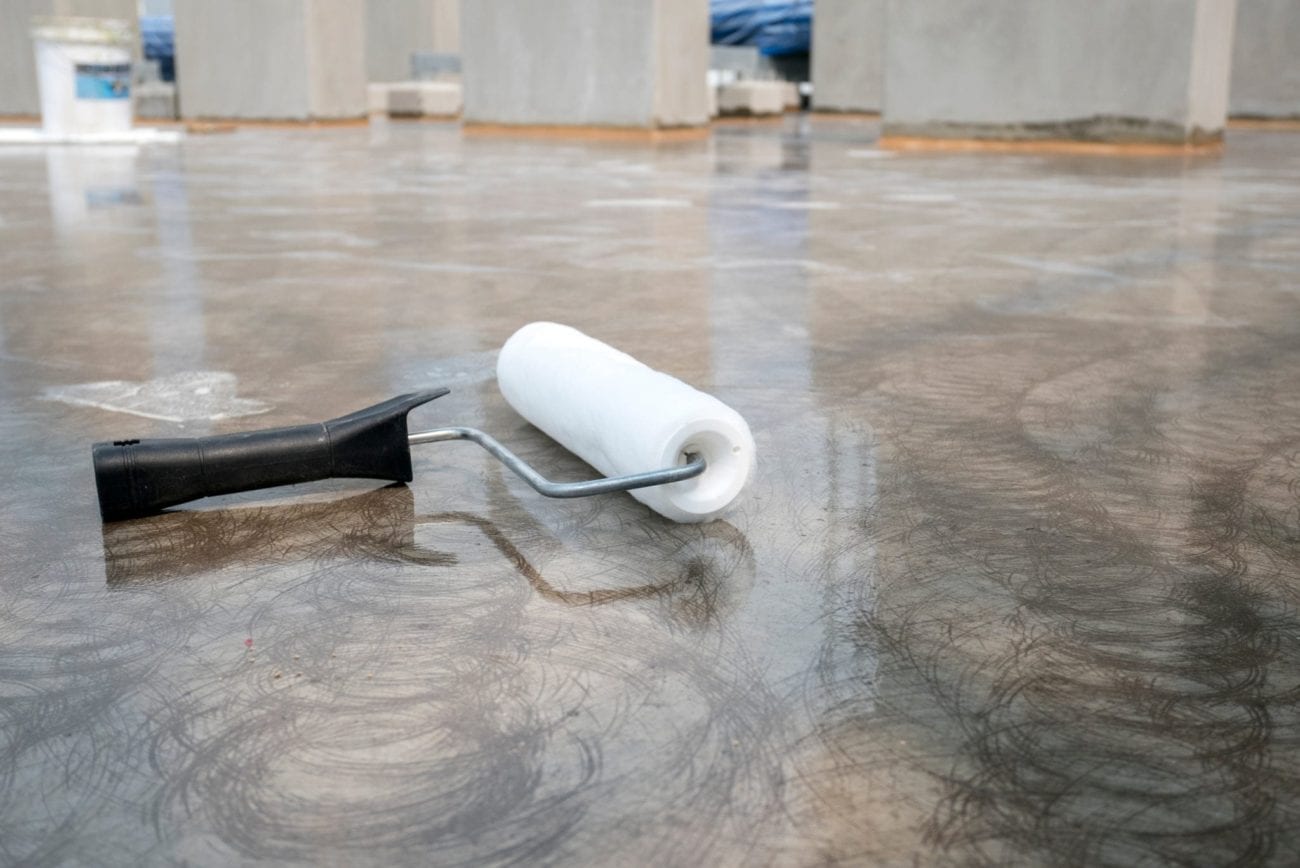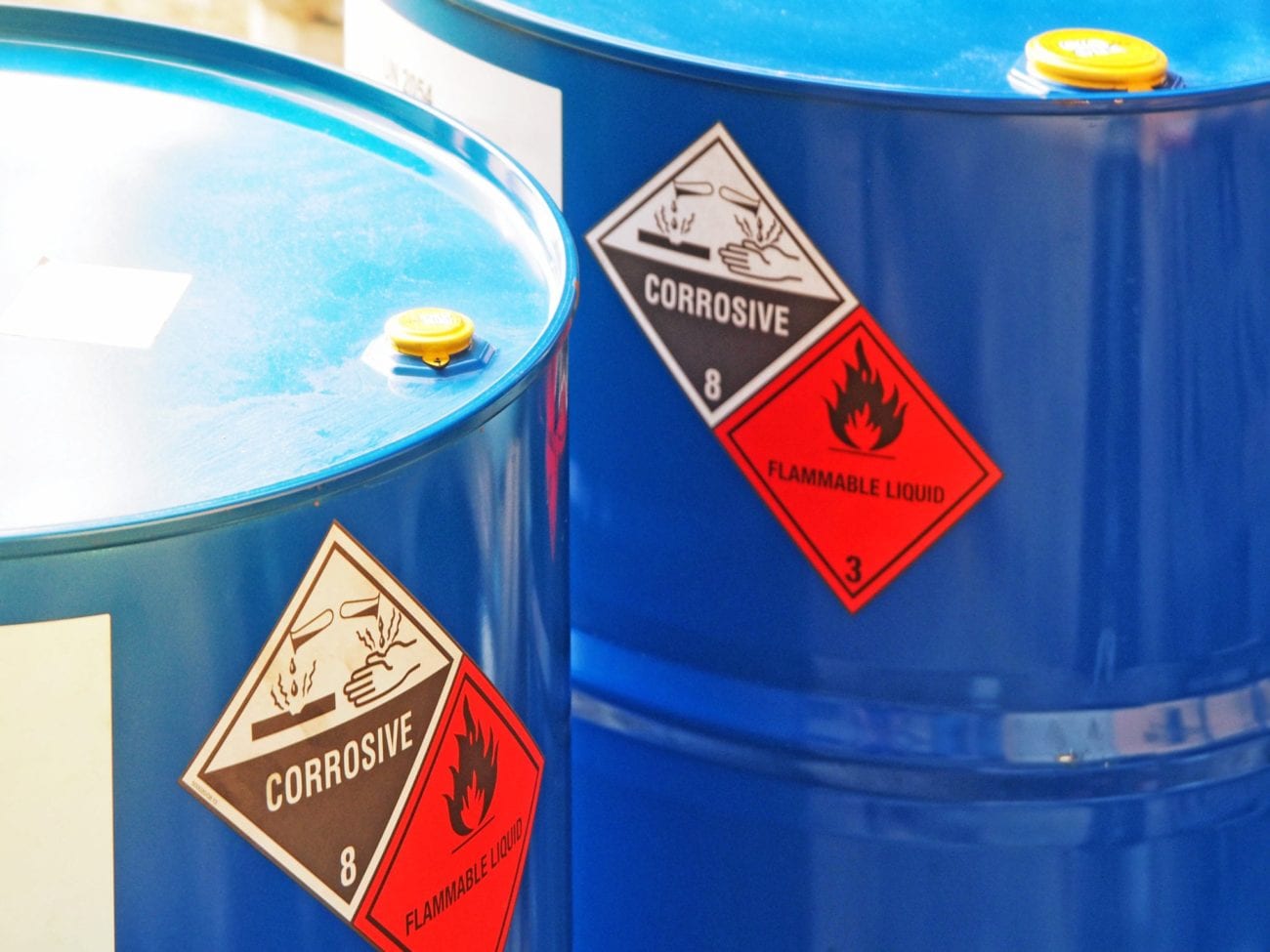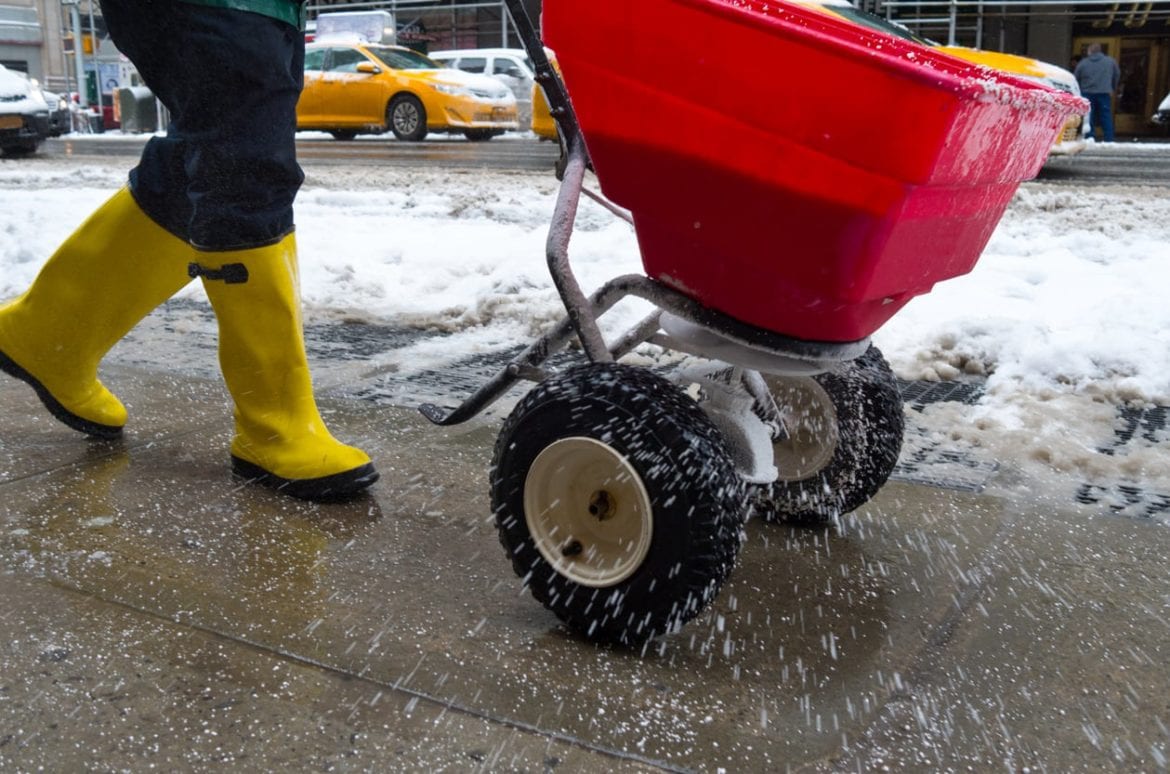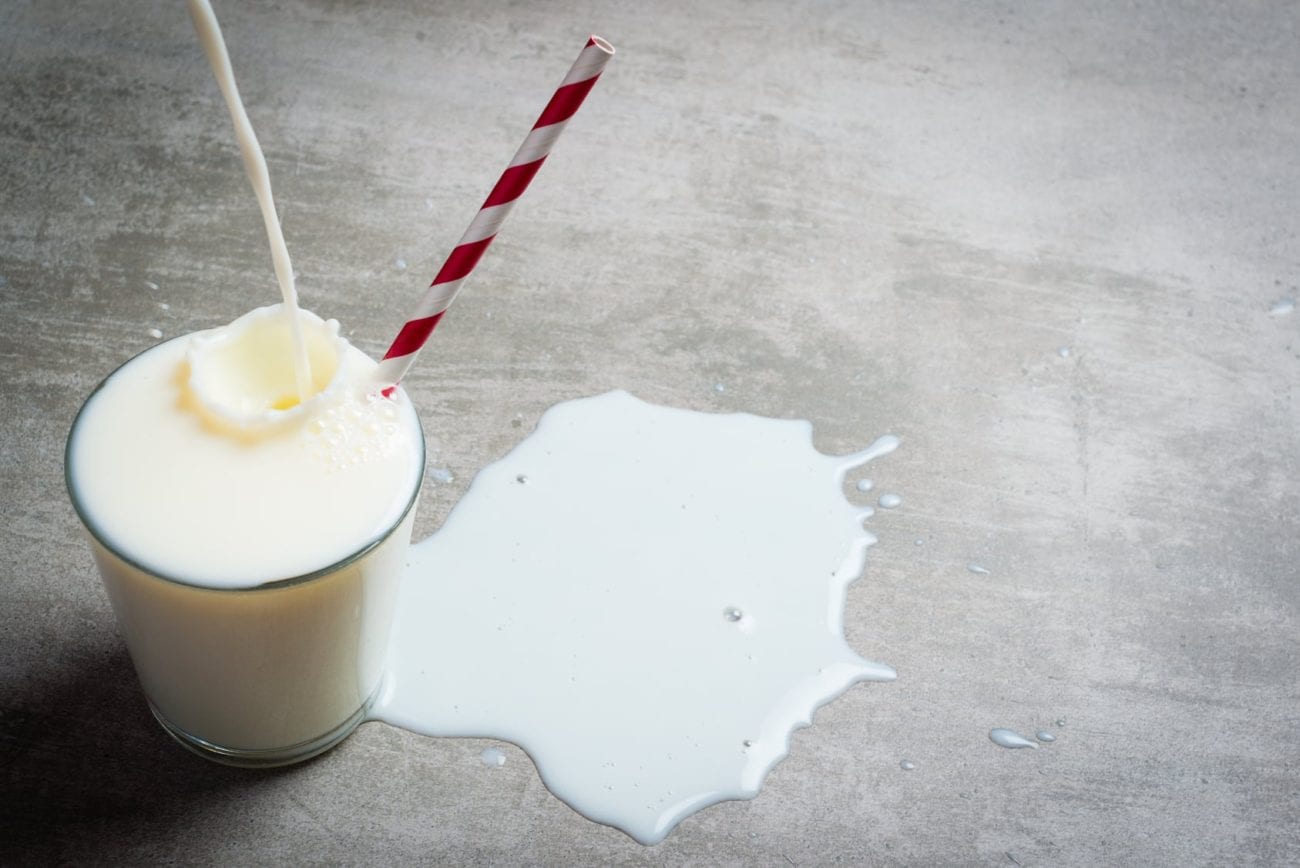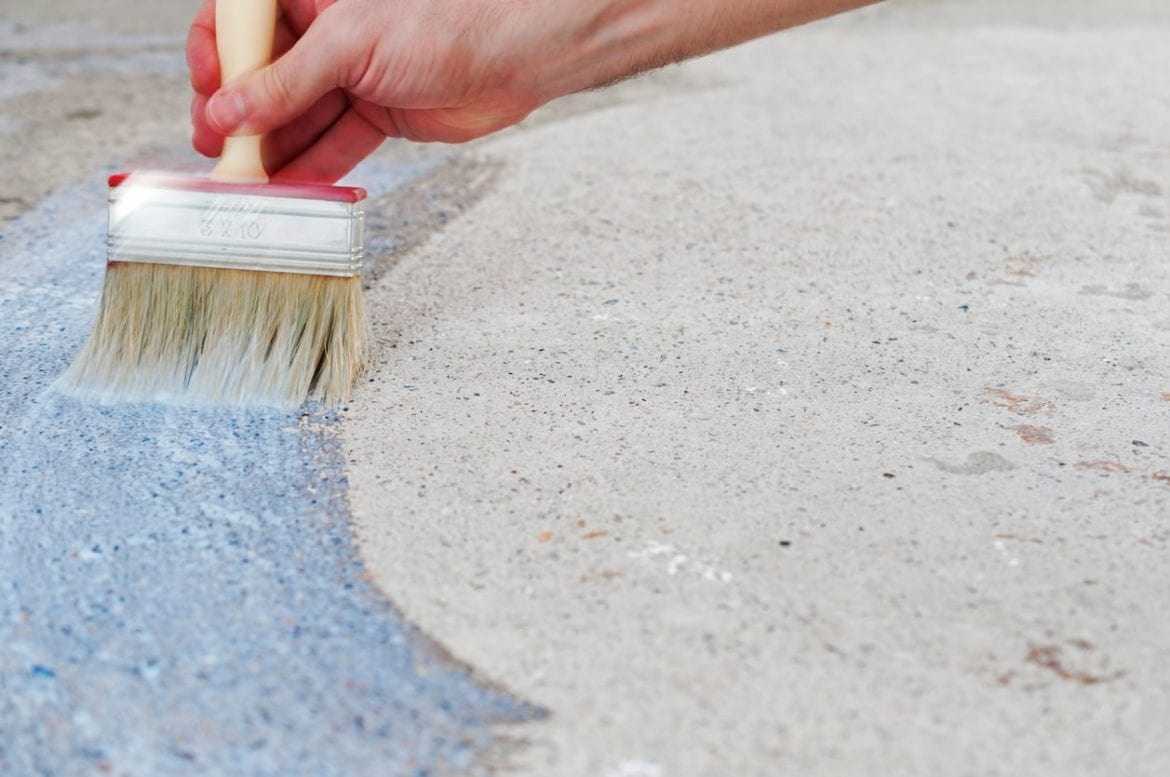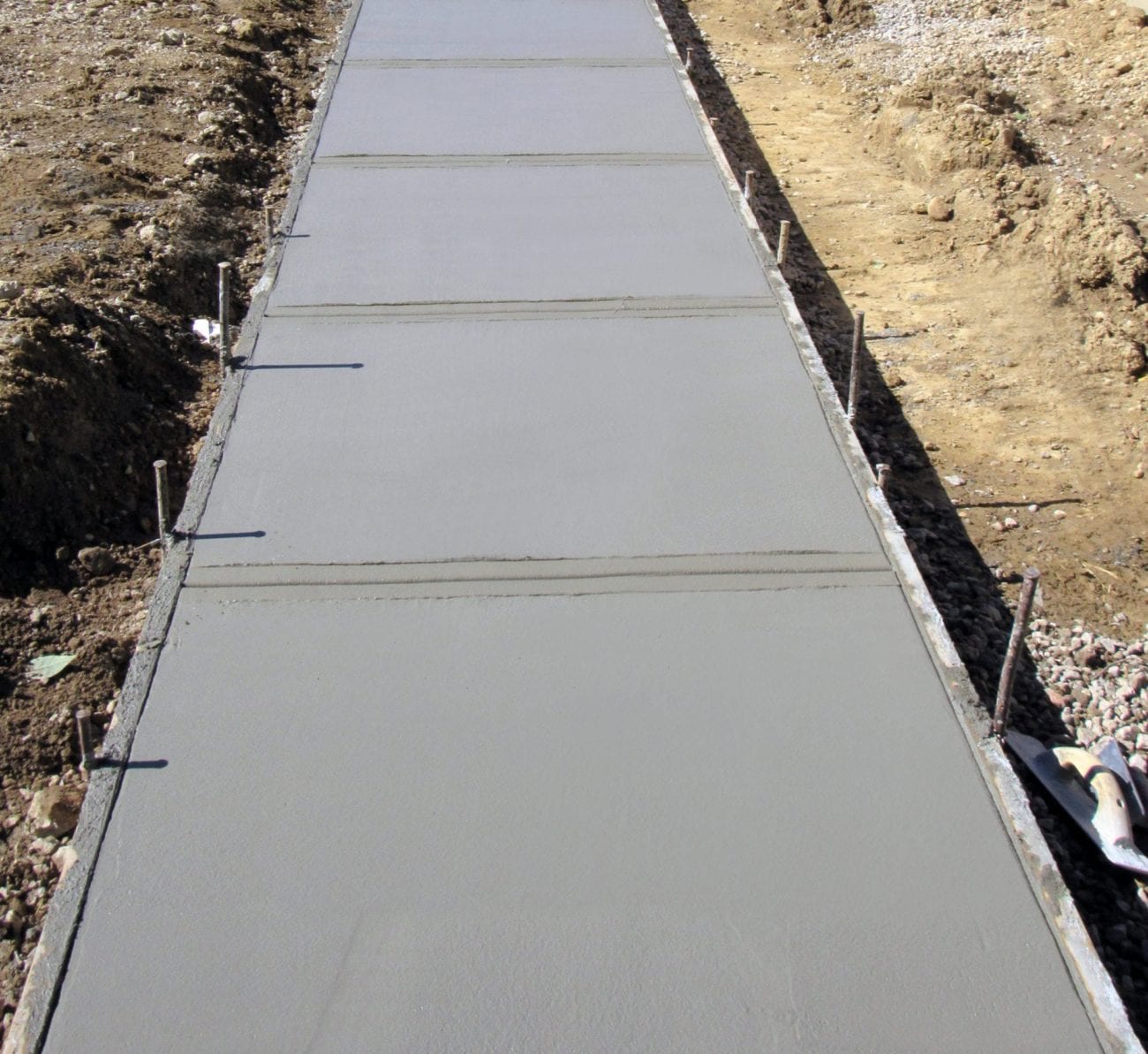After over 21 hours of researching more than 14 concrete sealers and testing and evaluating a few of them, our results for the Best Concrete Sealers for 2018 – Penetrating Sealers are found below.
Part 1: Best Concrete Sealers for 2018 – Penetrating Sealers
**Be sure to check out Part 2: Best Concrete Sealers for 2018 – Decorative Concrete Sealers
Best of the Best: Ghostshield Siloxa-Tek 8500 concrete sealer
Pros: Longevity and availability; available in a 1 gallon ready to use or 1 gallon concentrate that makes 5 gallons. For larger projects the concentrated version can be used to save money and shipping costs. Used in both the commercial and residential markets.
Cons: Price; it costs more than most of the other concrete sealer products we tested. You also have to apply two coats but a square footage calculator on the manufacturers website easily calculates how many gallons you need for both coats.
Home Depot Star Rating: 4.6/5
Check Price: Home Depot.com
Lowes Star Rating: 5/5
Check Price: Lowes.com
Actual customer reviews: (source HomeDepot.com)
Star Rating: 5/5 “Water beads up on the surface like a recently detailed car. Sweeeet!” – Novi
Star Rating: 5/5 “… So far, it’s holding very well. Had a couple of bad storms with no seepage anymore. It was just a cup of water but no water is definitely better…” – Cor68
Star Rating: 5/5 “This product performed superbly just as the reviews said it would. Easily applied with a roller, easily cleaned up and with the first rain the water beaded up like little marbles and ran in rivers off the patio. Excellent product and worth every penny!” – Medic
Star Rating: 5/5 “I purchased and used 2 gallons to seal a new versa block patio wall -3 sides.- approximately 250 sq. ft. front and a little less on the backside – applied where not back filled yet.
The product went on easily with an electric paint sprayer -2 coats wet to wet as instructed.
I waited until the block was dry -3 days following a hard rain- before applying.
Following application the results were remarkable. Previously saturated block was completely dry. Very impressive! … I would highly recommend this product. Great Results.” – ewr
Star Rating: 5/5 “OMG this stuff is fabulous. I ran it through a paint sprayer (it’s thinner than water) onto a 28-day old concrete foundation. Five gallons did 1000 sq ft plus some elevation-leveling cinder blocks (likely another 350 sq ft) double coat. As the name says, it’s invisible. Concrete stays the same color. This stuff penetrates the surface some, but seals the surface to the point that water beads up into little balls, just like on a freshly waxed car. You can push it with a broom, or a leaf-blower, it’ll roll like ball bearings. I will be doing this again on any concrete I have to deal with.” – clint
Also Good: Okon S-40 concrete sealer
Bottom Line: Not as universally available or reviewed but the manufacturer Rust-Oleum is tried and trued.
Pros: Available for purchase in store if you prefer not to purchase online.
Cons: HomeDepot.com only sells the concrete sealer product in a 5 gallon bucket or a 6 gallon case. This is not great when you have a smaller amount of square footage to seal. Also this product does not have as many reviews as some of the other products we tested so it was harder to get a feel from customers as far as longevity.
Home Depot Star Rating: 4.5/5
Check Price: Home Depot.com
Actual customer reviews: (source HomeDepot.com)
Star Rating: 5/5 “very easy to apply, I used pump sprayer and a paint brush to apply to joints. It dried in about 12-14 hours.” – fritz
Considerations:
Chemistry – For Part 1 of our Best Concrete Sealers for 2108 series, we reviewed penetrating concrete sealers; more specifically silanes, siloxanes and silane/siloxanes.
Finish – Penetrating concrete sealers leave natural finishes and do not change the appearance of the concrete whatsoever. If you are looking for a decorative sealer check out our Part 2: Best Concrete Sealers for 2018 – Decorative Concrete Sealers.
Features – Features include deicing salt resistance, water repellency, stain protection, mold, mildew and efflorescence growth protection.
Availability – We considered concrete sealer products that are in stock on shelves, concrete sealer products sold online through big box retailers and/or concrete sealer products sold online only shipped through the manufacturer themselves.
Performance -Results were conducted through independent tests by our experts, contractors, and homeowners. Concrete sealer products were evaluated on a 1 week, 3 month, 6 month and 1 year basis.
How we decided: There are hundreds of concrete sealers available on the consumer market, so how do you tell which one is right for you? We test every product we review. For this comparison 14 concrete sealer models were considered, 21 hours were spent researching, 2 experts were interviewed and 60 consumers were consulted. In our research, we found that more inexpensive penetrating concrete sealers suffered in quality due to low actives content and most commercial products were exorbitantly priced. We prioritized finding a high quality concrete sealer that was both durable and had a high actives content at a reasonable price. We also looked to big box retailers for credibility, and pulled reviews and information from Home Depot, Lowes and Amazon.
Deciding factors: The 8500 concrete sealer product that we have been testing for years has still maintained its integrity, water repellency and salt resistance while all of the other concrete sealer products tested failed in the same time period.
Tips and Tricks:
Siloxa-Tek 8500 Concrete Sealer: When purchasing through Home Depot and Lowes, free shipping and free returns were offered but the price was more expensive than buying from other distributors.
Okon S-40: Try Okon S-20 for a more economical, lesser actives formula. It does not last as long and needs to be reapplied more frequently but will provide a quick fix.
According to the OSHA.gov website, “In 2003 the United Nations adopted the Globally Harmonized System of classification and labeling of chemicals (GHS). The GHS includes criteria for the classification of health, physical and environmental hazards as well as specifying what information should be included on labels of hazardous chemicals as well as safety data sheets. Adopted on 3/26/2012 labels must include a signal word, hazard pictograms, manufacturer information, precautionary statements, hazard statements and product name. All hazardous chemicals shipped after 6/1/15 must be labeled according to these standards.”
All concrete sealers should now be labeled and shipped according to these standards. If you live in the State of California, manufacturers are also now required to inform you of any toxic chemicals in their products.
According to the Ca.gov website, ” In 1986 California voters approved an initiative to address their growing concerns about exposure to toxic chemicals. That initiative became the Safe Drinking Water and Toxic Enforcement Act of 1986, better known by its original name of Proposition 65. Proposition 65 requires the state to publish a list of chemicals known to cause cancer, birth defects or other reproductive harm. On 8/30/18 an amendment to the current regulation will be implemented that changes how warning labels should be displayed to the public.”
As a consumer and purchaser of concrete sealer and coatings products it is good to be informed about the labeling requirements as well as the safety hazards and concerns of the materials in use.
One of the most sought after concrete sealing products is a waterproofing sealer that is also able to repel deicing salts. Deicing salts and calcium chlorides are some of the most corrosive elements that concrete can be exposed to. They result in spalling, pitting, cracking and cause the concrete to erode all the way down to the rebar if left untreated. Because concrete has the appearance of being strong and indestructible, sealing it is not something that comes to mind – that is until you have active salt damage. Even if you do not salt your driveway, state and town roads are treated, you drive your car up the driveway into your garage and the salt drips off. Over time the concrete becomes damaged.
It is hard to fix existing salt damage with a sealer; however, it is entirely preventable if a penetrating water repellent with saltguard sealer is used. We review the Ghostshield 8500 product quite frequently on this site because it is one of the products we have used that has had the best, longest lasting results. Backed by a 100 year warranty, if reapplied every 10 years, concrete will remain looking new with out any spalls, pits or cracks. This is extremely important because the cost of replacing an existing concrete pad or driveway is about 14x the cost of the actual sealer itself!
Our Take: The 8500 product is a great option if you have a lot of square footage. The product is available in an ultra concentrated gallon; you take the 1 gallon you purchase and mix it with 4 additional gallons of water. When mixed you are left with a 5 gallon bucket which covers up to 625 sq. ft. (the 625 sq. ft. is for both recommended coats or 1250 sq. ft. for 1 coat). The ready to use version that does not require mixing and can be special ordered through Home Depot and Lowes. Whereas the ultra concentrated version can be ordered through Lowes.
If you have watched HGTV lately you will realize that concrete countertops are trending. Not only do they look amazing when installed but they are so economical in comparison to your typical granite and marble options. What is also trending is feather finish countertops, which is essentially using Ardex or Henry’s Feather Finish concrete mixes and applying them right on top of existing laminate countertops. You can even add pigments to the concrete mixes to make the countertops a color other than gray; we’ve seen white versions, and black versions that look awesome!
Since concrete countertops are extremely porous it is very important to seal them 28 days after the countertops have been cured to prevent staining, scratches and heat damage.
Popular products:
StoneLok E3 2K complete countertop kit includes everything you need to seal 40 sq. ft of concrete countertops. The sealer is applied via a multi-step process, you first apply a surface conditioner, than an epoxy primer and finally a super heat resistant and abrasion resistant polyurethane top coat. One of the most durable products available for use on a concrete countertop if applied correctly. Available in an extra low gloss, low gloss or gloss finish. Does require precise, skilled application and is recommend for use only by trained professionals. The end result is an extremely durable sealer that can resist coffee, wine, citrus, vinegar and Clorox.
If you are looking for a product that doesn’t require such skilled application but will also give excellent abrasion and chemical resistance we recommend the Polyaspartic 745 kit for concrete countertops. Although it has a short pot life (once part A and part B are mixed you must apply it within 20 minutes) it has an extremely fast cure time (24 hours) in comparison to typical epoxy products that need up to a week of cure time. Sold as a countertop kit, you mix part A with part B (already pre-measured) and roll right onto the countertops. Once cured the surface will leave a high gloss finish, acceptable for use on Ardex or Henrys feather finish countertops or regular poured concrete countertops.
Silane/Siloxane sealers are commonly used as water repellents and waterproofers especially on extremely porous cement based substrates like cinderblocks, stucco, brick and concrete. Excellent sealers for protection from freeze-thaw damage and salt degradation and commonly used on municipality jobs, highways and bridges.
Most Important Features When Purchasing a Silane/Siloxane Sealer:
- Non-yellowing and water based
- Resistance to mold, mildew, salt degradation, freeze-thaw damage
- Resistance to ASR, chloride penetration and water
Most Popular Silane/Siloxane Sealer Brand Reviews:
Siloxa-Tek 8500: Silane/siloxane designed for extremely porous concrete and masonry substrates. We have found this sealer to be extremely effective against salt degradation, spalling, cracking, freeze-thaw damage and water. We love that it is water based but performance is comparable and outperforms a solvent based silane/siloxane. 100% breathable with a 10 year warranty.
Eagle Natural Seal: Low percentage solids silane/siloxane extremely economically priced. Wide variety of applications and covers a substantial amount of square footage per gallon. No warranty on the product.
Okon S-20: High percentage solids, also available in a 40% solids version. Good protection against water and we love the ease of application with a low pressure sprayer. Low square footage per gallon.
SureKlean Weather Seal: Ready to use silane/siloxane that is also water based designed to repel water from most masonry and stucco surfaces. Will help to reduce cracking, spalling and staining. Adequate performance over time, need to reapply every few years.
Blok-Lok: We don’t like that is was not specifically designed for concrete, multi-surface sealer with a five-year warranty. Low square footage per gallon, we do like that it can be applied within 48 hours of concrete being poured since this is not a normal benefit of silane/siloxanes.

